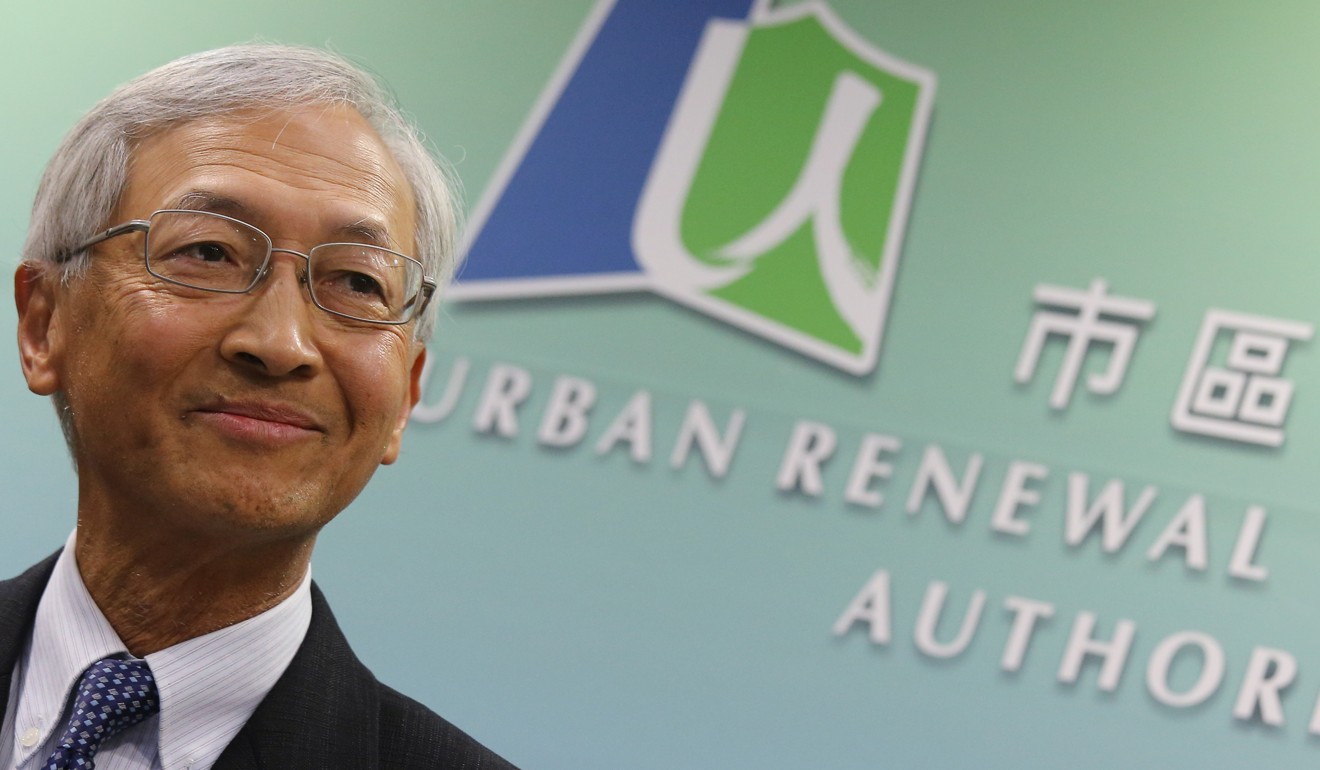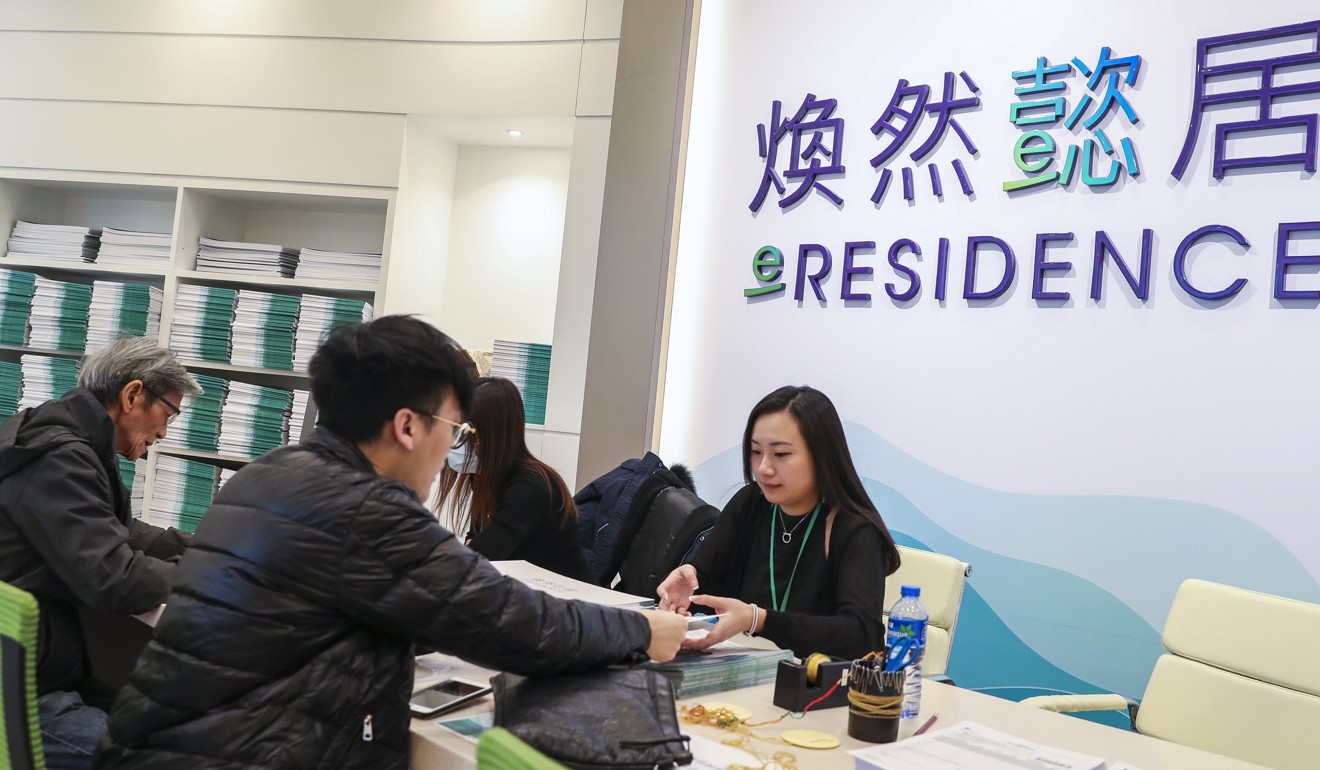
Hong Kong’s MTR and Urban Renewal Authority will be roped in to help government build more public housing units: Financial Secretary Paul Chan
- More urban redevelopment projects will be turned into subsidised housing for sale to young middle classes
- Sites along rail lines will also be earmarked for public housing development
As Hong Kong’s astronomical property prices continue to rise, Financial Secretary Paul Chan Mo-po has pledged, in a rare move, to give the city’s railway provider and urban redevelopment authorities a greater role in providing affordable housing.
“Property prices now are very high,” Chan said in an exclusive interview with the Post. “We understand people’s frustration. The government will make an effort to increase land supply and subsidised housing.”
Some measures will include turning more urban redevelopment projects into subsidised housing for sale to the young middle classes, as well as reserving sites along rail lines for public housing development, according to Chan.
Chan’s remarks came as the city was experiencing one of its longest upward cycles in property prices, thanks to consistently low interest rates that have fuelled the world’s most expensive housing market.
Trade war risks and capital flows ‘call for wary eye on financial security’
In a boom spanning 15 years broken only by a few short downturns, the city’s private housing prices have increased more than fivefold since 2003. In a study last month by real estate investment firm CBRE, an average home of about 600 sq ft would cost an average of HK$9.6 million (US$1.2 million), the highest among 35 global metropolises.
In March, the prices of the city’s pre-owned homes rose 2.9 per cent from the previous month – their fastest pace in about three years – according to the latest figures from the Rating and Valuation Department, reflecting the market was gathering new steam.

Chan declined to reveal whether the government would introduce further measures to cool the market down, remaining cautious not to direct market reactions.
“One way or the other it’s not appropriate for us to comment,” he said. “No matter what we say, it can become a sales pitch to hype up the market. We can only say we have been keeping an eye on it, but we will not tell you what we plan to do.”
But Chan said the government would do more to increase affordable housing supply.
If there are suitable projects, we encourage them to do more affordable housing
He said the Urban Renewal Authority (URA) had amassed a net asset of more than HK$40 billion, which should put the semi-public body in a good position to share more social responsibility.
“If there are suitable projects, we encourage them to do more affordable housing,” he said. “The primary objective of URA is not to make a profit. It needs to cooperate with government policies.”

The authority had so far provided two subsidised housing projects. One was De Novo in Kai Tak, with part of the flats sold at a 20 per cent discount of their market prices. The other was a “starter home” project in Hung Hom called eResidence, which would provide 450 flats to be sold at a discount of 38 per cent for middle class first-time property buyers.
Spiralling property prices ‘place urban renewal work in jeopardy’
However, at a departing gathering with media at the end of last month, the URA’s former chairman Victor So Hing-woh remained cautious about providing more subsidised projects in the future.
He said the authority had seen surpluses due to the upward market trend, but noted the self-financing body would encounter financial pressure when the market turns because selling redevelopment property projects was its only source of income.
“[The HK$40 billion] can be used up very quickly,” So said.
Chan said the government was ready to provide the authority with financial support on affordable housing projects. He said the government had enough money to fund such projects.
“If it’s worth doing, we will not hesitate to support them,” he said.

De Novo cost the authority HK$2.4 billion to develop in 2015, while the government’s capital expenditure that year was HK$86.5 billion.
Another way to increase the affordable housing supply would be to look for potential sites along the city’s far-reaching rail lines, Chan said.
That would deviate from the government’s past practice of giving railway property sites to the MTR Corporation for private housing estates, so the company could use the property income to fund building new railways and operating them.
Buyers pile into Hong Kong’s ‘sandwich’ flats for fear of missing out
For example, Chan said, the government had been considering whether to take back a site atop the Siu Ho Wan depot in northern Lantau, or give the site to the MTR for development.
The site is capable of providing at least 14,000 flats.

Chan said the government had also been considering a public-private housing mix for the site. If the proportion of public housing was too high, he said, the government might have to dip into public coffers to fund MTR railway developments and operations.
But he added that if the government was going to ask the legislature for funding in exchange for more public housing atop railways, “a reasonable assumption” was that lawmakers would support it.

Looking at development potential along rail lines was one of the tasks of the newly restructured Steering Committee on Land Supply chaired by Chan.
Under the new structure, the committee would include every government policy bureau, which would meet once a quarter. In the past, the committee included only the Development Bureau, Transport and Housing Bureau, and Environment Bureau.
Chan said the committee would also look at implementing the government’s railway development strategy with a renewed “infrastructure first” approach, which would build infrastructure such as new rail lines before the completion of new towns or large-scale housing estates.
Why Hong Kong cannot copy Singapore’s approach to public housing
In the past, the government often built new towns before railways for fear of creating underused public infrastructure, but the practice had instead created communities relatively cut off from urban centres.
The railway development strategy was issued in 2014, which outlines seven new railway developments to be built by 2031.
Some of the projects, Chan said, would facilitate transport in future new towns or housing projects and the government would build them first.
The proposed Northern link and Kwu Tung station would facilitate future new towns in the northeast New Territories, and a South Island line would run past a major public housing redevelopment project in southern Hong Kong Island, he said.
The other projects include a new Hung Shui Kiu station in a future new town near Tuen Mun, a Tung Chung West extension, a Tuen Mun South extension, an East Kowloon line connecting Diamond Hill and Tseung Kwan O, and a North Island line along the northern shore of Hong Kong Island.

Lawmaker and former railway boss Michael Tien Puk-sun said he welcomed the “infrastructure first” approach.
“The government’s old mindset has been that infrastructure will only come when there are enough people to support it,” Tien said. “But then those who move into the areas have to suffer from inconvenient transport.”
Today, I think it will be more difficult for society to agree that sites along rail lines should only be reserved for private housing
He said building infrastructure before or while developing new towns could also bring construction costs down because the government did not have to take measures to reduce noise levels.
But Tien said the government should reserve most sites along rail lines for private housing development to “maximise profit” due to those sites’ prime locations. Public housing, he said, should be built next to the private estates within walking distance to railway stations.
However, Lawrence Poon Wing-cheung, a housing policy expert at City University, said society’s most urgent need today was subsidised housing, and people who could not afford the city’s expensive housing would ask why only the rich could enjoy living next to a railway station.
“It’s not only a question of economics but also a political question,” Poon said. “Today, I think it will be more difficult for society to agree that sites along rail lines should only be reserved for private housing.”

